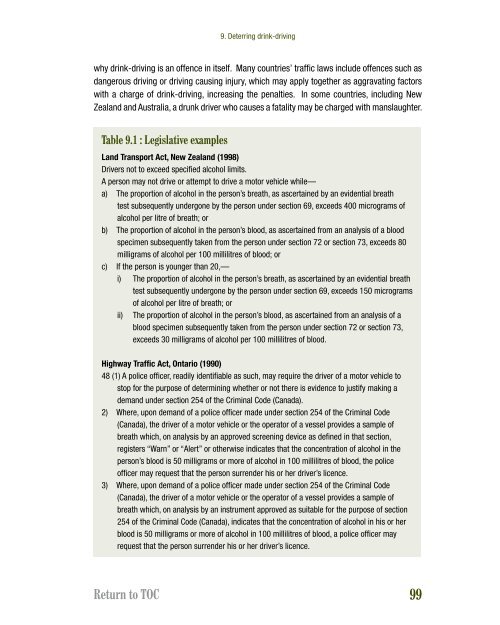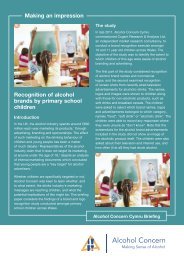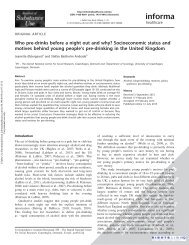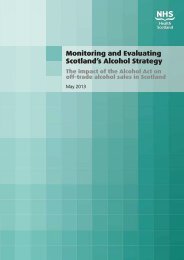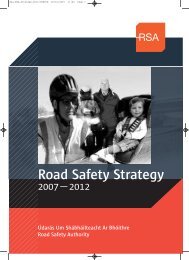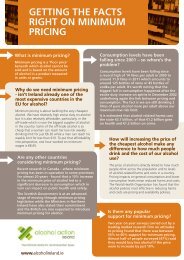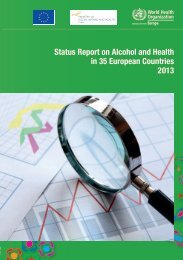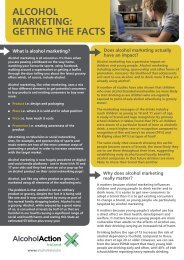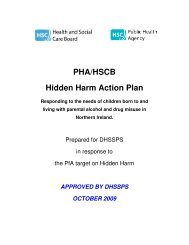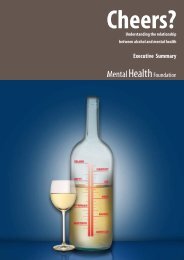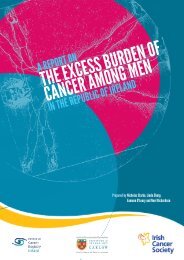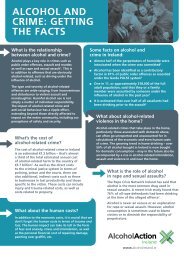Addressing the harmful use of alcohol - WHO Western Pacific Region
Addressing the harmful use of alcohol - WHO Western Pacific Region
Addressing the harmful use of alcohol - WHO Western Pacific Region
Create successful ePaper yourself
Turn your PDF publications into a flip-book with our unique Google optimized e-Paper software.
9. Deterring drink-driving<br />
why drink-driving is an <strong>of</strong>fence in itself. Many countries’ traffic laws include <strong>of</strong>fences such as<br />
dangerous driving or driving causing injury, which may apply toge<strong>the</strong>r as aggravating factors<br />
with a charge <strong>of</strong> drink-driving, increasing <strong>the</strong> penalties. In some countries, including New<br />
Zealand and Australia, a drunk driver who ca<strong>use</strong>s a fatality may be charged with manslaughter.<br />
Table 9.1 : Legislative examples<br />
Land Transport Act, New Zealand (1998)<br />
Drivers not to exceed specified <strong>alcohol</strong> limits.<br />
A person may not drive or attempt to drive a motor vehicle while—<br />
a) The proportion <strong>of</strong> <strong>alcohol</strong> in <strong>the</strong> person’s breath, as ascertained by an evidential breath<br />
test subsequently undergone by <strong>the</strong> person under section 69, exceeds 400 micrograms <strong>of</strong><br />
<strong>alcohol</strong> per litre <strong>of</strong> breath; or<br />
b) The proportion <strong>of</strong> <strong>alcohol</strong> in <strong>the</strong> person’s blood, as ascertained from an analysis <strong>of</strong> a blood<br />
specimen subsequently taken from <strong>the</strong> person under section 72 or section 73, exceeds 80<br />
milligrams <strong>of</strong> <strong>alcohol</strong> per 100 millilitres <strong>of</strong> blood; or<br />
c) If <strong>the</strong> person is younger than 20,—<br />
i) The proportion <strong>of</strong> <strong>alcohol</strong> in <strong>the</strong> person’s breath, as ascertained by an evidential breath<br />
test subsequently undergone by <strong>the</strong> person under section 69, exceeds 150 micrograms<br />
<strong>of</strong> <strong>alcohol</strong> per litre <strong>of</strong> breath; or<br />
ii) The proportion <strong>of</strong> <strong>alcohol</strong> in <strong>the</strong> person’s blood, as ascertained from an analysis <strong>of</strong> a<br />
blood specimen subsequently taken from <strong>the</strong> person under section 72 or section 73,<br />
exceeds 30 milligrams <strong>of</strong> <strong>alcohol</strong> per 100 millilitres <strong>of</strong> blood.<br />
Highway Traffic Act, Ontario (1990)<br />
48 (1) A police <strong>of</strong>ficer, readily identifiable as such, may require <strong>the</strong> driver <strong>of</strong> a motor vehicle to<br />
stop for <strong>the</strong> purpose <strong>of</strong> determining whe<strong>the</strong>r or not <strong>the</strong>re is evidence to justify making a<br />
demand under section 254 <strong>of</strong> <strong>the</strong> Criminal Code (Canada).<br />
2) Where, upon demand <strong>of</strong> a police <strong>of</strong>ficer made under section 254 <strong>of</strong> <strong>the</strong> Criminal Code<br />
(Canada), <strong>the</strong> driver <strong>of</strong> a motor vehicle or <strong>the</strong> operator <strong>of</strong> a vessel provides a sample <strong>of</strong><br />
breath which, on analysis by an approved screening device as defined in that section,<br />
registers “Warn” or “Alert” or o<strong>the</strong>rwise indicates that <strong>the</strong> concentration <strong>of</strong> <strong>alcohol</strong> in <strong>the</strong><br />
person’s blood is 50 milligrams or more <strong>of</strong> <strong>alcohol</strong> in 100 millilitres <strong>of</strong> blood, <strong>the</strong> police<br />
<strong>of</strong>ficer may request that <strong>the</strong> person surrender his or her driver’s licence.<br />
3) Where, upon demand <strong>of</strong> a police <strong>of</strong>ficer made under section 254 <strong>of</strong> <strong>the</strong> Criminal Code<br />
(Canada), <strong>the</strong> driver <strong>of</strong> a motor vehicle or <strong>the</strong> operator <strong>of</strong> a vessel provides a sample <strong>of</strong><br />
breath which, on analysis by an instrument approved as suitable for <strong>the</strong> purpose <strong>of</strong> section<br />
254 <strong>of</strong> <strong>the</strong> Criminal Code (Canada), indicates that <strong>the</strong> concentration <strong>of</strong> <strong>alcohol</strong> in his or her<br />
blood is 50 milligrams or more <strong>of</strong> <strong>alcohol</strong> in 100 millilitres <strong>of</strong> blood, a police <strong>of</strong>ficer may<br />
request that <strong>the</strong> person surrender his or her driver’s licence.<br />
Return to TOC<br />
99


